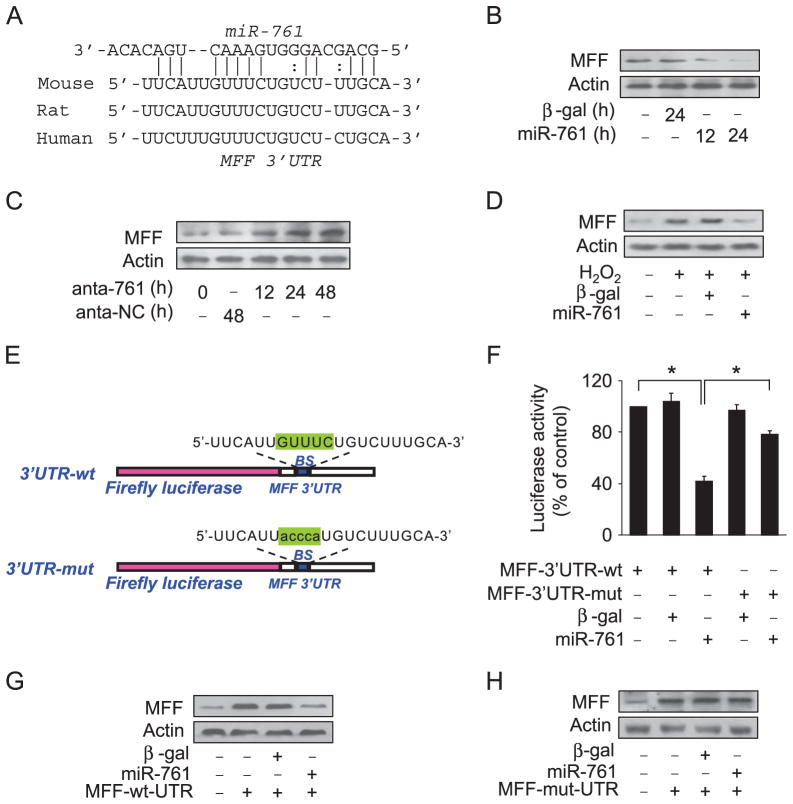Fig. 3.
miR-761 targets mitochondrial protein MFF. (A) Analysis of MFF 3′UTR potential binding site for miR-761. (B) miR-761 suppresses the expression of MFF. Adenoviruses harboring miR-761 or β-gal were used to infect cardiomyocytes at a multiplicity of infection of 100. The expression of MFF was detected by immunoblot. (C) Knockdown of miR-761 elevates MFF levels. Cardiomyocytes were transfected with antagomir miR-761 (anta-761) or antagomir negative control (anta-NC). The expression of MFF was detected by immunoblot. (D) miR-761 attenuates hydrogen peroxide-induced MFF upregulation. Cardiomyocytes were infected with adenoviruses encoding miR-761 or β-gal at a multiplicity of infection of 100 and then treated with 100 μM hydrogen peroxide. MFF levels were detected by immunoblot. (E) miR-761 binding site was mutated in the MFF 3′UTR. (F) miR-761 inhibits the luciferase activity of MFF with wild-type 3′UTR. HEK293 cells were infected with adenoviral miR-761 or β-gal and then transfected with MFF with a wild-type 3′UTR or mutated 3′UTR. The cells were harvested, and luciferase activity was measured. *P<0.05. (G and H) miR-761 can inhibit the expression of MFF with wild-type 3′UTR. Cardiomyocytes were co-infected with adenoviral miR-761 or β-gal together with MFF with a wild-type 3′UTR or mutated 3′UTR. The expression of MFF was assayed by immunoblot.

